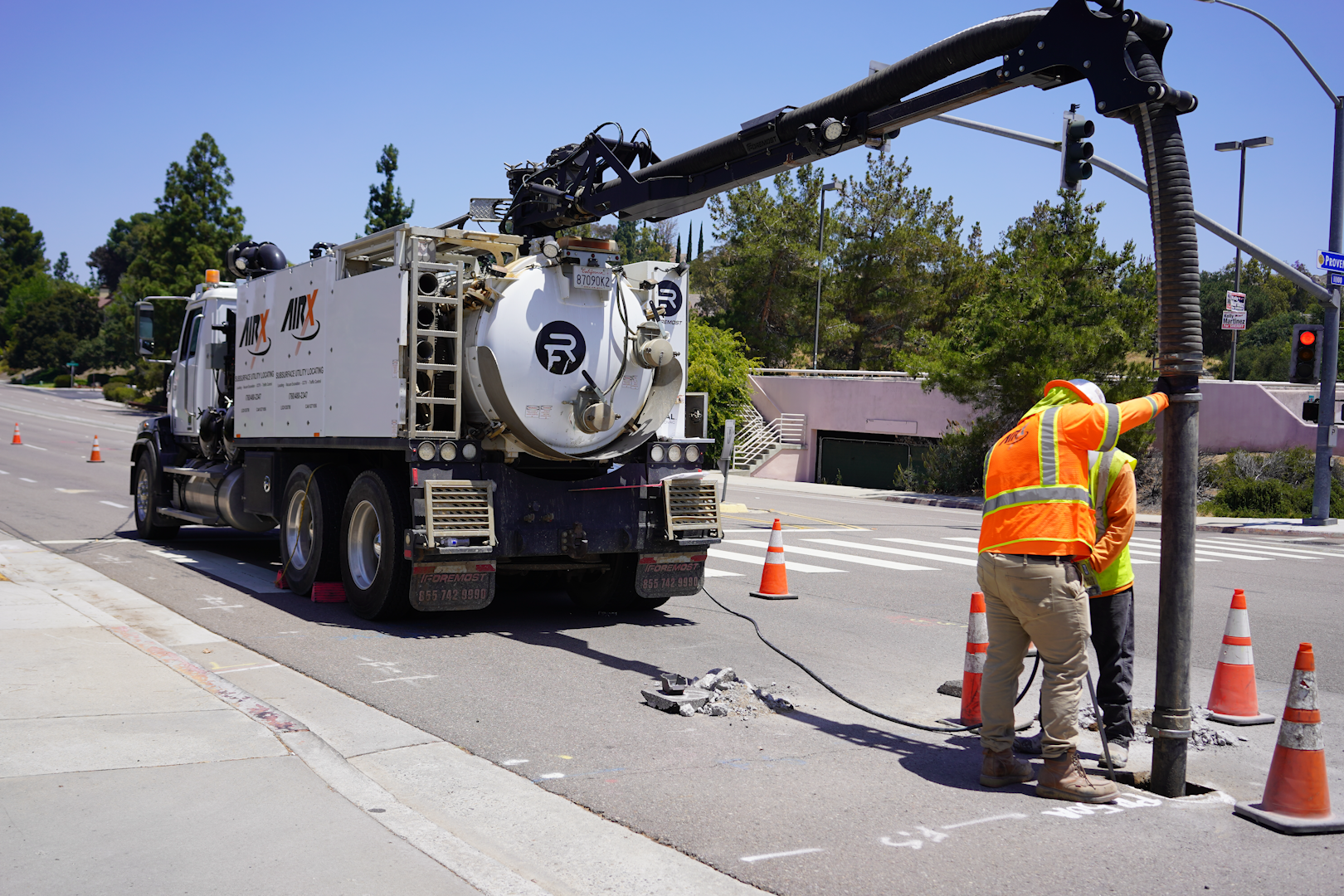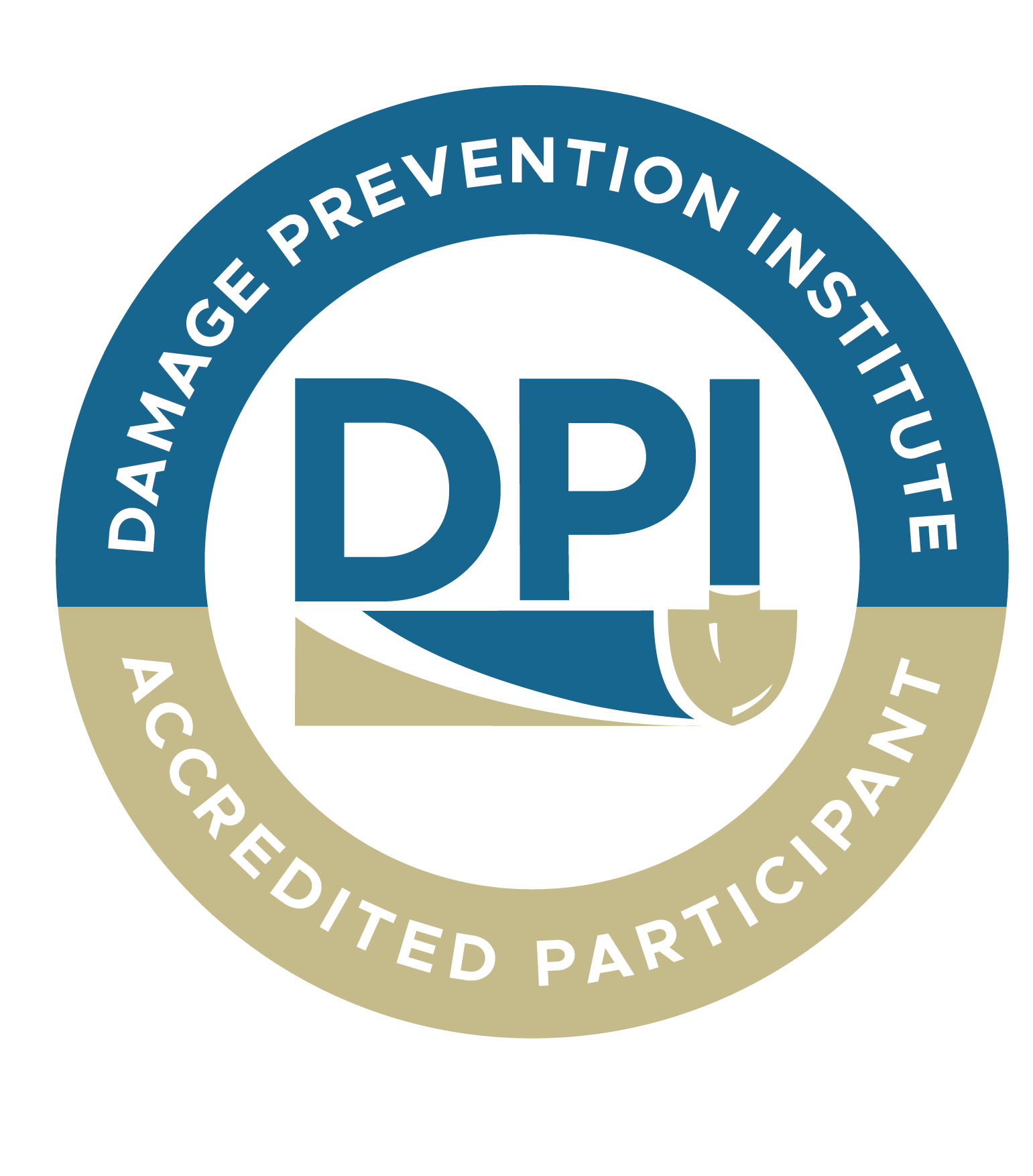Potholing with Hydro or Air and Vacuum Excavation
Potholing with Hydro or Air and Vacuum Excavation



Why Choose AirX for Potholing & Street Surface Repair
Commitment to Safety & Excellence
The byproduct of these methods is mud or dirt spoils, we’re able to repurpose all of our materials in a safe and clean manner. Spoils are dried and tested and are utilized either as backfill on other projects, given to homeowners, landscapers or nurseries to be used in their improvement projects throughout the community while simultaneously minimizing overall waste.
AirX also provides complete street surface repair services to meet agency code to patch our potholes performed in the street. Our Team is trained and experienced on all asphalt or concrete repair requirements and work closely with agency Resident Engineers to ensure a quality patch that meets expectations.
This includes a grind overlay or concrete panel replacement if needed. Any used concrete and asphalt collected is stockpiled to be sent to recycling facilities.
What to Expect When You Work With Us
A Team of Experts
Our experienced team is comprised of registered civil engineers and general engineering contractors. Field technicians are given thorough and continued training to ensure your project gets done right.
An overview and quality assurance process is in place to make sure projects are performed accurately and efficiently.
Committed to Sustainability
Dedicated to Cost-Effective Solutions

How Our Potholing & Street Surface Repair Services Work
Hydro/Vacuum Excavation
Essentially, high pressure water is used to disturb the soil and create a slurry. An industrial vacuum is then used to suction the slurry and expose any existing underground facility networks. The slurry material is vacuumed into fully self contained truck mounted tanks for later safe disposal.
Hydrovac excavations are an excellent alternative to mechanical excavations, making them effective in reducing construction mishaps brought about by heavy machinery such as excavators, backhoes or even hand digging. According to the Occupational Safety and Health Administration, the number of trench-related hazards and fatalities due to cave-ins and collapses in recent years has “nearly doubled the average of the previous five years.” Hydrovac excavation has become a clearly viable – and much safer – solution to the dangers of traditional excavating.
Air Excavation
Air excavation is the process of using compressed air to disturb the earth’s soil, which is then vacuumed up into a debris tank. Unlike hydro excavation, this technique only uses compressed air to disturb the soil, and is typically used to safely expose underground utilities in areas where the use of water is not recommended or not necessary.
Street Surface Repair
A typical pothole location is usually a relatively small area of approximately 12” X 12”. If a street (concrete or asphalt) is in need of repair, our team will make those repairs using asphalt hot patch or another approved method, such as concrete panel replacement. All repairs (including backfill and compaction) will meet or exceed agency expectations.
Common Projects
Hydro vs. Air Excavation
Any sensitive digging operations; including excavating around cable or utility lines, pipelines, and, in some cases, rail lines for repair or removal can be performed with water, however the by-product of water excavation is mud. Disposing of mud is a more involved process than what is incurred with air excavation – which is dry dirt material. Any issues with disposal of mud may dictate the need for air.
Street Surface Repair
Street surface repairs are typically required after a potholing project or a construction project that may have damaged street surfaces.
FAQs
What are the benefits of potholing with hydro and air excavation?
There are several benefits to these methods of utility potholing, including:
- Less invasive: This means your construction site will face minimal interruption during the excavation process
- Reduced risk for injuries: When done by experienced professionals, vacuum excavation is extremely safe with little to zero risk of people getting hurt
- More accurate: Visual confirmation of utilities makes utility potholing extremely accurate and removes the risk of a utility strike
- More efficient: Vacuum excavation is faster than manual methods, and because of the minimal damage to the surface level, other work can still be carried out at the same time
